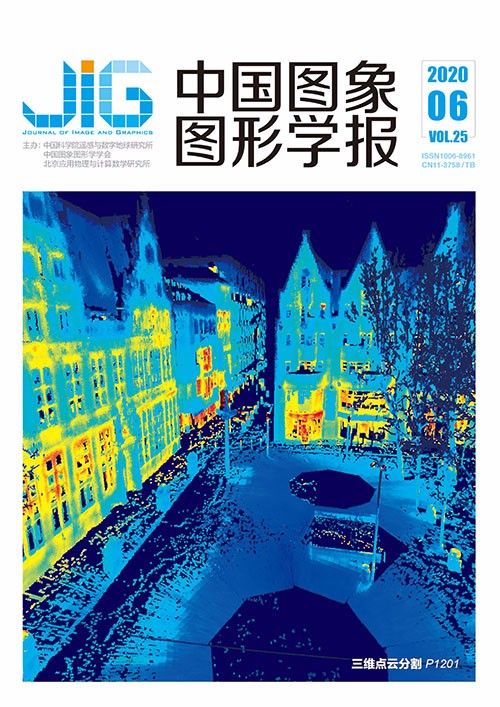
结合深度学习和超像元的高分遥感影像变化检测
王艳恒1,2, 高连如2, 陈正超2, 张兵1,2,3(1.上海海洋大学信息学院, 上海 201306;2.中国科学院空天信息创新研究院数字地球重点实验室, 北京 100094;3.中国科学院大学环境与资源学院, 北京 100049) 摘 要
目的 随着遥感影像空间分辨率的提升,相同地物的空间纹理表现形式差异变大,地物特征更加复杂多样,传统的变化检测方法已很难满足需求。为提高高分辨率遥感影像的变化检测精度,尤其对相同地物中纹理差异较大的区域做出有效判别,提出结合深度学习和超像元分割的高分辨率遥感影像变化检测方法。方法 将有限带标签数据分割成切片作训练样本,按照样本形式设计一个多切片尺度特征融合网络并对其训练,获得测试图像的初步变化检测结果;利用超像元分割算法将测试图像分割成许多无重叠的同质性区域,并将分割结果与前述检测结果叠合,得到带分割标记的变化检测结果;用举手表决算法统计带分割标记的变化检测结果中超像元的变化状况,得到最终变化检测结果。结果 在变化检测实验结果中,本文提出的多切片尺度特征融合卷积网络模型在广东数据集和香港数据集上,优于单一切片尺度下卷积神经网络模型,并且结合超像元的多切片尺度特征融合卷积网络模型得到的Kappa系数分别达到80%和82%,比相应的非超像元算法分别提高了6%和8%,在两个测试集上表现均优于长短时记忆网络、深度置信网络等对比算法。结论 本文提出的卷积神经网络变化检测方法可以充分学习切片的空间信息和其他有效特征,避免过拟合现象;多层尺度切片特征融合的方法优于单一切片尺度训练神经网络的方法;结合深度学习和超像元分割算法,检测单元实现了由切片到超像元的转变,能对同物异谱的区域做出有效判决,有利于提升变化检测精度。
关键词
Deep learning and superpixel-based method for high-resolution remote sensing image change detection
Wang Yanheng1,2, Gao Lianru2, Chen Zhengchao2, Zhang Bing1,2,3(1.College of Information Technology, Shanghai Ocean University, Shanghai 201306, China;2.Key Laboratory of Digital Earth Science, Aerospace Information Research Institute, Chinese Academy of Sciences, Beijing 100094, China;3.College of Resources and Environment, University of Chinese Academy of Sciences, Beijing 100049, China) Abstract
Objective The resolution of a remote sensing image increases with the rapid development of remote sensing technology. A high-resolution image has high spatial and temporal resolutions, providing conditions for real-time monitoring and change detection. Change detection in remote sensing is used to detect changes in the same regions at different periods. The purpose of this study is to find a change in the same region between specific periods. However, with the improvement in the spatial resolution of remote sensing images, the difference in the spatial texture information of the same object increases. The features of remote sensing images are becoming increasingly complex and diverse. Traditional change detection methods experience difficulty in obtaining good results from high-resolution remote sensing images. Unsupervised deep learning algorithms suffer from difficulty in extracting valid features and making them equal in areas wherein different objects have the same spectra and similar objects have different spectra. To improve the change detection accuracy of high-resolution remote sensing images, particularly for effective judgment in areas with considerable texture differences in different periods at the same location, this study proposes a deep learning and superpixel segmentation method for high-resolution remote sensing image change detection. Method The algorithm of the deep learning and superpixel-based method for high-resolution remote sensing image change detection exhibits the following characteristics. First, finite labeled data are divided into patches as training samples. Simultaneously, a multiscale patch feature fusion network-based convolutional neural network (MPFF-CNN) is designed. The final model parameters and patch size are determined by testing the different sizes of patches. A preliminary change detection result of the test image can be obtained using this network. Second, the superpixel segmentation algorithm is used to segment the test image into many nonoverlapping homogenous regions and transfer the segmentation result to the preliminary test result to obtain the change detection result with a segmentation mark. An optimal segmentation scale is difficult to obtain in high-resolution remote sensing images. Thus, a multiscale segmentation algorithm is used in this work. Third, the quantities of changed and unchanged pixels of each superpixel in the change detection result with the segmentation marker are statistically evaluated using the hand-crank voting algorithm. All the pixel values of the superpixel are replaced with the pixel values. The categories are more under this superpixel. All the change detection results are stacked to a hypercolumn. Lastly, the quantities of changed and unchanged pixels of each spectrum in the hypercolumn is counted using the hand-crank voting algorithm. If the number of changed pixels is more than that of the unchanged pixels in each spectrum, then the spatial position of the spectrum has a pixel value of 1; otherwise, the pixel value is 0. Result To estimate the accuracy of the proposed change detection algorithm, experiments are conducted on the Guangdong change detection dataset and the Hong Kong change detection dataset. Four widely used methods are selected for comparison, including the fuzzy C-means-based, support vector machine-based, deep belief network-based, and long short-term memory-based methods. The experimental results of change detection in both datasets indicate that MPFF-CNN exhibits an outstanding performance, which is better than the results of the CNN-based model at a single patch size. The change detection results obtained by the multiple superpixel scale are better than those of the single superpixel scale in both datasets. The percentages of correct classification and kappa obtained by deep learning combined with superpixel (MPFF-CNN-SP) are 97% and 80% for the Guangdong change detection dataset, respectively. MPFF-CNN-SP is 1% and 6% higher than MPFF-CNN. MPFF-CNN-SP is better than all the compared algorithms. Similarly, the percentages of correct classification and kappa obtained by MPFF-CNN-SP for the Hong Kong change detection dataset are 99% and 81%, respectively. MPFF-CNN-SP is 1% and 8% higher than MPFF-CNN. MPFF-CNN-SP is superior to all the compared algorithms. Conclusion The multiscale patch feature fusion method is better than the CNN-based method of training a single patch size. The multiscale patch feature fusion network-based CNN in this work can adequately gain the spatial information and other effective features of patches. Moreover, it does not cause severe overfitting. The multiscale superpixel segmentation results after double hand-raising voting algorithms are significantly stronger than the segmentation results of a single-scale superpixel segmentation. The deep learning and superpixel method transforms the detection unit from patch to superpixel, effectively judging different texture information of the same object and significantly improving change detection accuracy.
Keywords
high-resolution remote sensing image change detection deep learning super pixel multiscale of patch feature fusion
|



 中国图象图形学报 │ 京ICP备05080539号-4 │ 本系统由
中国图象图形学报 │ 京ICP备05080539号-4 │ 本系统由